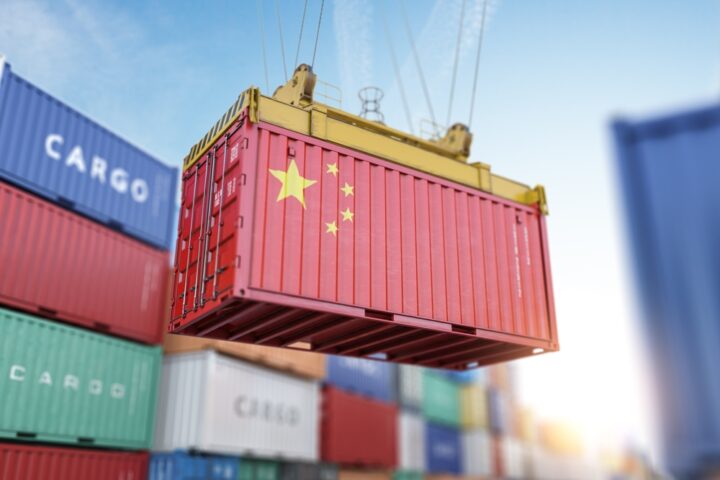Chinese leaders have agreed to raise the budget deficit to 4% of gross domestic product (GDP) in 2025, marking the highest level on record. The move reflects a more proactive fiscal policy aimed at maintaining an economic growth target of around 5%, according to sources familiar with the matter. While the decision has yet to be officially announced, it aligns with strategies outlined during December’s Politburo meeting and the recent Central Economic Work Conference (CEWC).
The shift to a higher deficit, up from an initial 3% target, signals a stronger push for fiscal stimulus. The additional one percentage point in spending equates to approximately 1.3 trillion yuan ($179.4 billion), largely funded through off-budget special bonds, as per the two sources. These measures come as China prepares to cushion its economy from both domestic challenges and external pressures.
The Need for Proactive Stimulus
China’s decision to raise the deficit comes at a critical juncture. The world’s second-largest economy has faced significant headwinds in 2024, including a deepening property crisis, mounting local government debt, and sluggish consumer demand. Exports, a rare bright spot, now risk heavy disruption due to expected U.S. tariffs if Donald Trump returns to the White House.
Trump’s campaign promises include levies exceeding 60% on Chinese imports, a move that could significantly impact China’s manufacturing sector. Exporters, already grappling with shrinking margins, warn these tariffs would hurt jobs, investments, and overall growth. Analysts further note the added risk of exacerbating industrial overcapacity and deflationary pressures.
To address these challenges, China’s central bank is also expected to adopt an “appropriately loose” monetary stance, marking a shift from the “prudent” policy it has maintained for over a decade. This shift could pave the way for more interest rate cuts and increased liquidity injections in 2025.
Economic Growth Target: Stability Over Aggression
Despite the fiscal boost, analysts believe the 5% GDP target for 2025 is less about aggressive stimulus and more about maintaining confidence. Morgan Stanley noted that while fiscal expansion is likely to grow to 2 trillion yuan, the growth target is aimed at “guiding expectations” rather than acting as a strict economic constraint.
Government advisers reportedly urged Beijing to maintain its growth target rather than lower it, as confidence plays a key role in economic recovery. The CEWC summary echoed this sentiment, emphasizing the importance of “steady economic growth” and signaling further government debt issuance without disclosing specific figures.
Navigating External Pressure and Trade Tensions
The anticipated U.S. tariffs have added urgency to China’s fiscal plans. The U.S. remains one of China’s largest trading partners, purchasing over $400 billion worth of Chinese goods annually. With rising trade uncertainties, many manufacturers are relocating production abroad to avoid punitive measures.
To mitigate the tariffs’ impact, China is considering weakening its currency, the yuan, next year. While CEWC summaries reaffirmed the pledge to maintain “basic stability” in the exchange rate, analysts expect policymakers to adopt a more flexible stance to support exporters.
Fiscal Policy and Debt Challenges
China’s reliance on fiscal stimulus raises questions about debt sustainability. Over the past 14 years, China’s total debt—spanning households, businesses, and the government—has grown fivefold, while GDP has expanded roughly threefold. As a result, analysts highlight the importance of balancing fiscal expansion with long-term stability.
Nevertheless, fiscal tools remain central to China’s economic strategy for 2025. With an additional 1.3 trillion yuan in spending, infrastructure projects and other growth-driven initiatives are expected to anchor China’s recovery efforts.
Monetary Tools to Complement Fiscal Measures
While fiscal expansion will take center stage, China’s central bank is expected to complement it with monetary tools. Analysts anticipate further interest rate cuts and liquidity injections to ease financing pressures on businesses and local governments.
This coordinated approach reflects China’s efforts to provide immediate economic support while addressing structural issues, including trade tensions and deflationary risks.
Looking Ahead: Challenges and Adaptation
China’s record-high deficit for 2025 underscores the government’s commitment to economic stability and growth. However, the success of these measures will depend on navigating external trade pressures and domestic challenges, such as the property market downturn and rising debt.
As policymakers finalize their strategy, confidence-building remains a priority. While stimulus and monetary easing offer short-term relief, analysts stress that structural reforms and prudent debt management will be key to sustaining growth beyond 2025.







